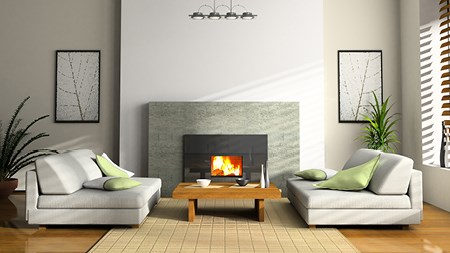Throughout Johannesburg, the kiss of autumn can be seen in the trees and the first fingers of cold have started to creep into the night air. Yes, winter is well on its way. At this time of year, everyone starts to break out their winter clothes and heaters. Given the increasing costs of living and the fact that electricity is still in short supply, the coming winter may prove a particularly onerous one for all.
The situation is exacerbated by the fact that, in the main, South African homes are not built for winter. The majority of South African homes feature tiled floors, airy balconies and large windows which keep these properties cool in summer. Unfortunately, these design features work against them in winter and make heating such homes difficult.
In anticipation of the coming crunch, Eskom recently commissioned an energy efficiency expert to calculate the energy and costs entailed in heating an average-size room to 18ºC and what it takes to keep this temperature constant for one month. According to Eskom, the study showed that the cost of heating a room from 11ºC to 18ºC was significantly more than maintaining a constant temperature. The study also showed that electricity is still the most effective heating option.
The following calculations are based on an assumed electricity price of 84c/KWh and LPG at 15R/Kg to achieve the same room heating effect.
• Heating the room:
-with electricity: R43.44
-with gas: R60.97
• Maintaining the room’s temperature for 24 hours:
-with electricity: R5.91
-with gas: R8.29
• Heating and maintaining the room temperature for 30 days:
-with electricity: R220.62
-with gas: R309.66
Eskom also asked energy experts to ascertain which heating options are the most energy efficient. Apparently, underfloor heating is the most ineffective way to heat a home. This is due to the fact that the floor has to be heated before the temperature of the room can be influenced. Even after this occurs, the warm air generated generally just continues to rise and is lost into ceilings unless they are insulated.
Wall-mounted heaters aren’t much better it seems. Wall-mounted heaters are generally quite small, which means that they have to be left on for a long time to make any impact. Furthermore, some of the heat these heaters generate is lost as it radiates into a wall’s bricks. Eskom found that gas heaters are not necessarily more effective than electric heaters but given the high cost of bottled gas, electric heating is still cheaper in South Africa. The main advantage of gas heaters is that they radiate heat almost immediately.
As far as increased comfort, cost and power usage goes, the most effective heating option are infrared heaters like those often used in restaurants. These heaters are the most energy effective because they heat up objects and not the air. All things considered, Eskom advocates either oil heaters or two kilowatt fan heaters both of which feature thermostats. These two types of heaters consume around the same amount of electricity to heat a room. However, both feature different advantages and disadvantages.
Oil heaters are most effective in contained spaces such as a single room. Open plan living areas are simply too big for an oil heater to make a real impact. They also take longer and a fair amount of energy to heat up. Fan heaters provide heat and comfort immediately and they can be directed to wherever the hot air is needed most. Most fan heaters now also come with a small container which can be filled with water to prevent the air in the room from drying out.
Heating hints and tips:
• Insulation is the single most important factor when it comes to heating a home. An insulated room requires 51 percent less energy than an un-insulated room. Insulating your home’s ceiling is the simplest and most effective way to prevent the warm air generated by heaters from escaping.
• Only heat the rooms that you and your family are going to spend time in.




